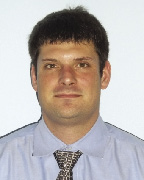The U.S. Green Building Council (USGBC) Leadership in Energy and Environmental Design (LEED) program verifies acceptable indoor air quality (IAQ) in newly constructed or renovated buildings by either flushing the building with outdoor air or conducting baseline air testing after construction and prior to occupancy.
Flush-out
This option requires that the building be flushed with a specified amount of outdoor air after construction completion and before occupancy and that specific temperature and humidity conditions be maintained in all areas of the building. We've found that for most buildings, a minimum of one to two weeks will be required to complete the flush-out process, while flushing out some buildings may take weeks or months, and that this timeline is often prohibitive.
IAQ Testing
This option requires performing air testing after construction and before occupancy. All test results in the building must meet acceptable levels prior to occupancy. The testing option prescribes a minimum number of sampling locations, depending on the building size and the HVAC system distribution. IAQ testing can be implemented during the brief window of time between construction completion and occupancy (usually within one to two days). It also provides a baseline metric of IAQ conditions in the building.
An environmental professional with LEED experience should ensure that the IAQ testing meets the requirements of the credit, that sampling is performed using acceptable methods, and that the testing results and documentation can hold up to the rigorous requirements of the credit review process.
A full understanding of the LEED credit requirements is necessary to determine the optimal approach based on your building characteristics and project schedule demands. EH&E's experience is that for the majority of projects IAQ testing is more easily implemented since flush-out typically requires an extensive period of time to complete and to document.
William Wade is a staff scientist at Environmental Health & Engineering, Needham, Mass.
Tags:







